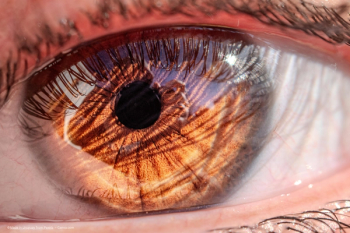
Patterned laser trabeculoplasty
Study demonstrates safety of PLT and its potential to treat open angle glaucoma
Laser surgery has become quite well-founded as a secondary option for glaucoma patients, offering a less invasive route than the more traditional surgical procedures. Patterned laser trabeculoplasty (PLT) is one laser option available to patients that is a computer-guided treatment using the PASCAL platform from Topcon Medical Laser Systems (Santa Clara, California, USA).
"PLT is a unique computer-guided laser treatment," said Dr Miho Nozaki (Nagoya City University Graduate School of Medical Sciences, Nagoya, Japan). Dr Nozaki and colleagues (Dr Shuichiro Hirahara and Dr Yuichiro Ogura) recently performed a study to examine the safety and efficacy of PLT with the PASCAL Streamline 577 (yellow wavelength) in open angle glaucoma patients.1
First experience with yellow (577 nm) PLT
A report has previously been published on PLT with green wavelength (532 nm) describing it as a precise and minimally traumatic treatment while also offering a good IOP reduction,2 however, the yellow wavelength has not been reported on until now. "This," explained Dr Nozaki, "was the reasoning behind our study. It was our first experience with PLT (577 nm) on open angle glaucoma patients."1
In the restrospective study, Dr Nozaki and colleagues looked at nine patients with open angle glaucoma. Each patient underwent PLT with the PASCAL Streamline 577. Both pre- and postoperative IOP, medication score and laser setting parameter were all evaluated by the team for analysis.
"All patients in this study were already taking topical medication," continued Dr Nozaki. "Several patients had also already undergone selective laser trabeculoplasty (SLT), but these procedures had occurred more than 6 months before our study."
Surprisingly significant
"PLT using 577-nm PASCAL exhibited a 31% reduction in IOP during 6 months of follow-up," said Dr Nozaki. "I thought this level of reduction in IOP was surprising but in our study, the patient population was quite small, so I think we really have to increase the number of patients, and follow them for a longer period."
In addition to the surprisingly significant reduction in IOP, Dr Nozaki revealed that there was no significant difference in the pre- and postoperative medication score. "As for complications," she added, "one eye developed transient IOP elevation (9%) after PLT, but there was no eye that showed peripheral anterior iris synechia or corneal endothelial damage after PLT."
Newsletter
Get the essential updates shaping the future of pharma manufacturing and compliance—subscribe today to Pharmaceutical Technology and never miss a breakthrough.










































